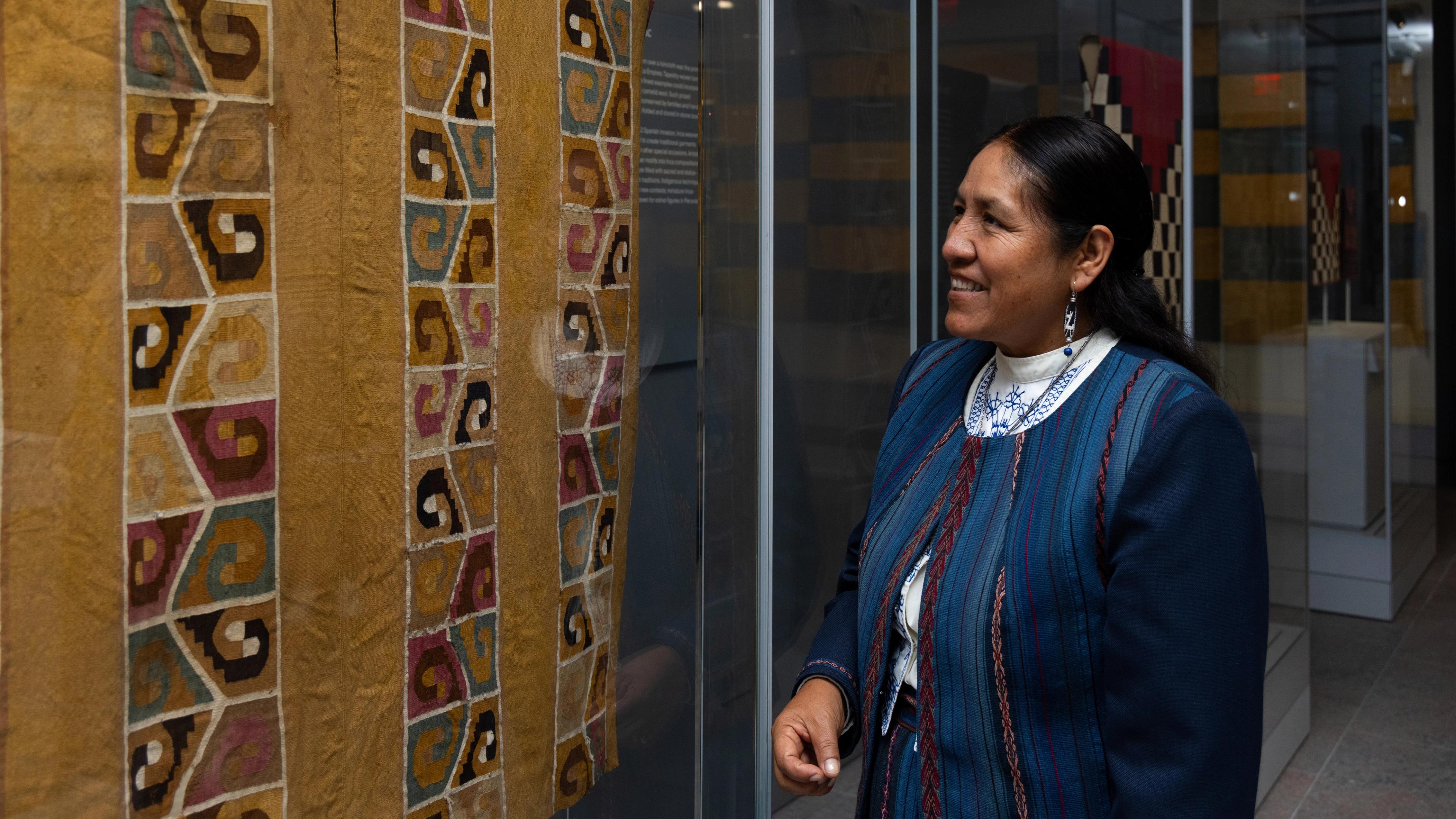Nilda Callañaupa Alvarez is an Indigenous Quechua weaver, spinner, natural dyer, and knitter from Chinchero in the Cusco region of Peru.
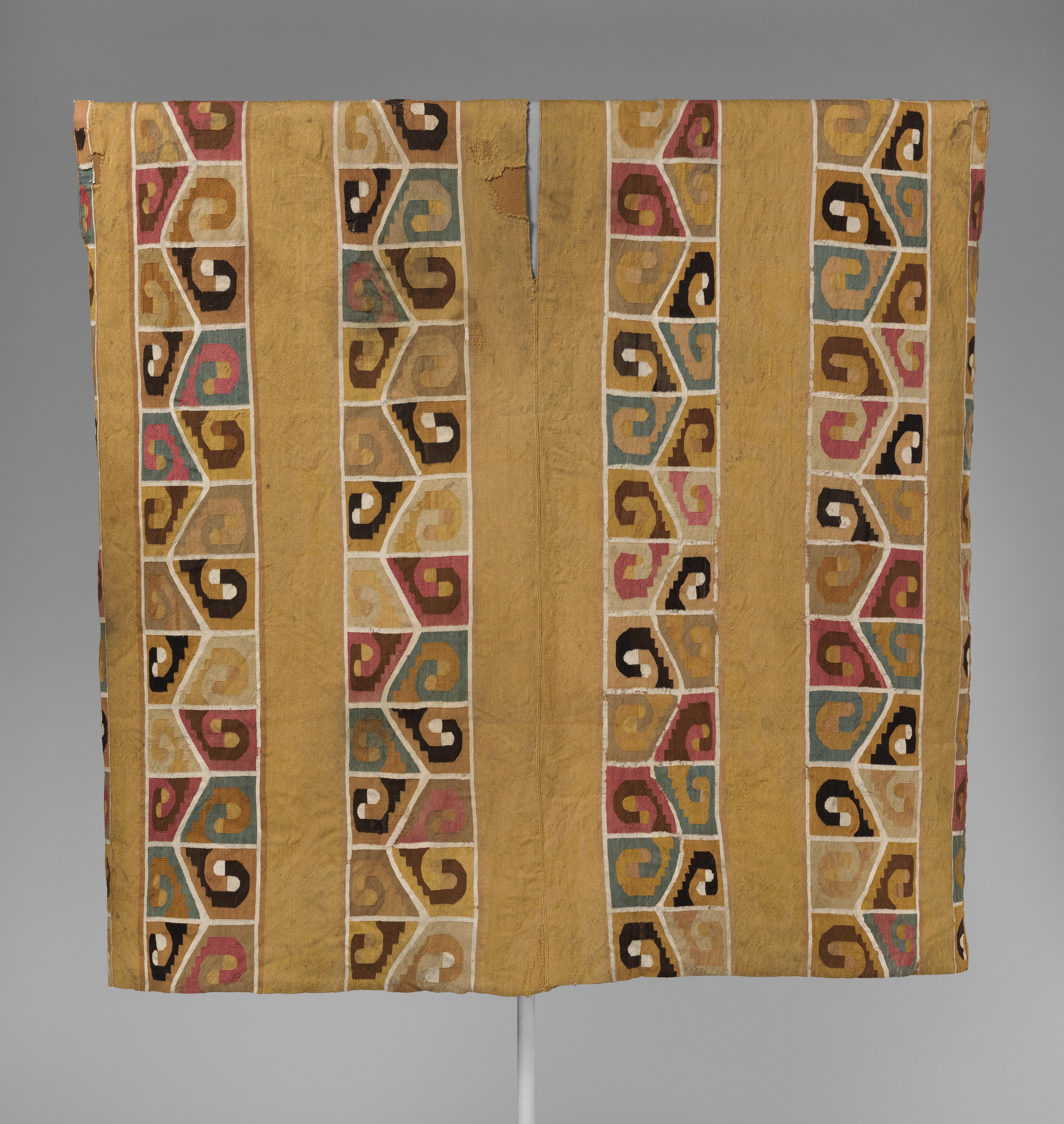
Tapestry Tunic, 7th–9th century. Peru. Wari. Camelid wool, H. 42 11/16 × W. 42 15/16 in. (108.5 × 109 cm). Gift of Claudia Quentin, in celebration of the Museum's 150th Anniversary, 2020 (2020.79)
In the weaving tradition that Callañaupa Alvarez carries on, textiles are expressions of memory, history, and identity. “We, the Andean people have inherited from pre-Inca times, the techniques of how to make clothes. You should be able to be recognized by the type of clothing and textiles you are doing. It’s your cultural identity, where you come from, your origins.”
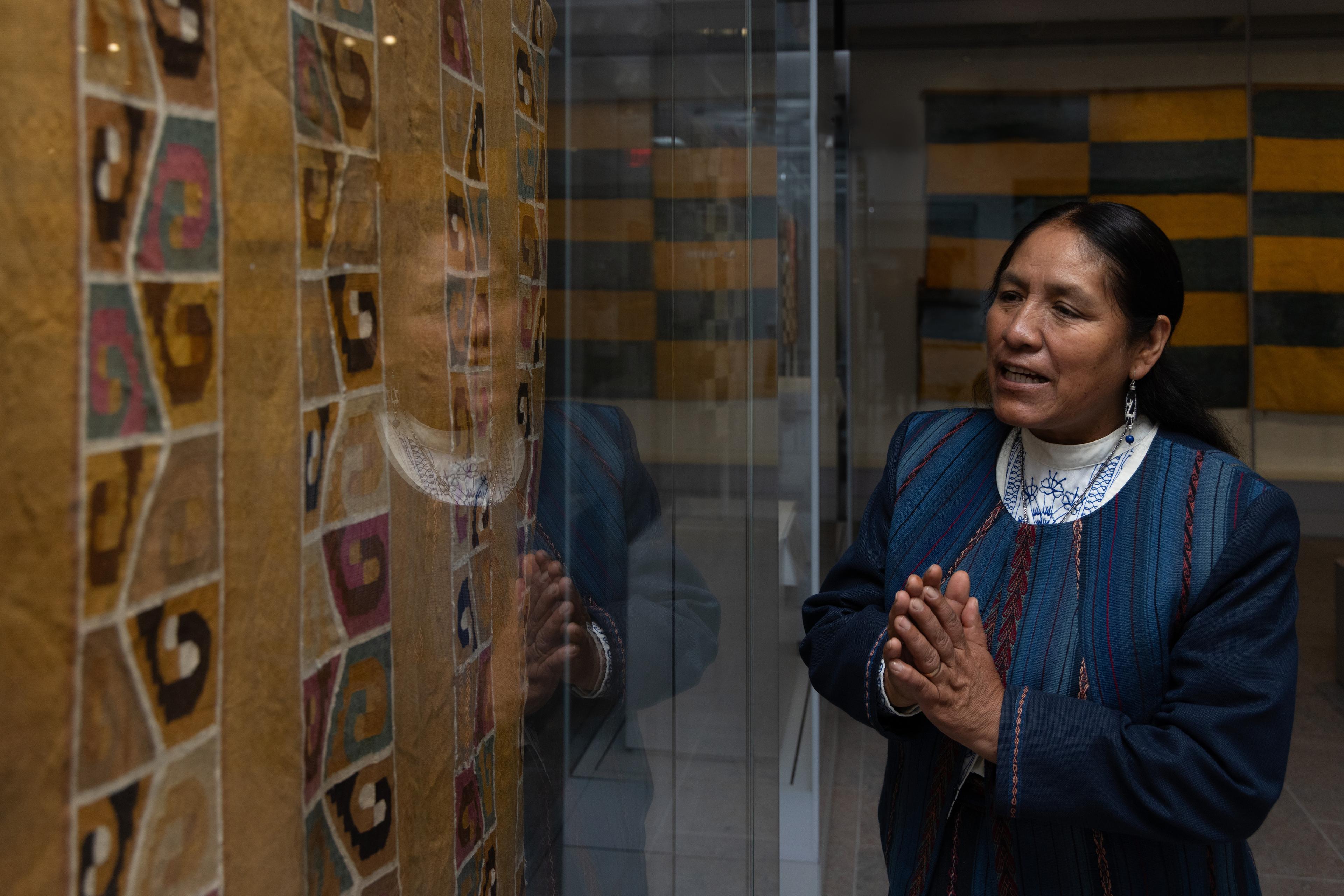
Nilda Callañaupa Alvarez visits the textiles gallery in the Arts of the Ancient Americas. Photographs by Anna-Marie Kellen, Photographic Program Manager, Met Imaging.
“From the fineness of the yarn to color combinations and the intensity of natural dyes, wearers would be recognized by the iconography, the designs, the patterns, many of them have origins from the pre-Columbian times.” In these communities, textiles serve as visual signifiers of both personal histories and group identity.
“Today, in our textiles, many of the patterns lost the meaning or the names that connected them with something specific, but our iconography represents the environment around us, like water in many dimensions: reflections, meandering rivers, different shapes of lakes. The flora presented may be looking from the top or from the side. Pieces of the constellations, even farming tools. And it is historical, events that happened in the weaver's life are cited.”
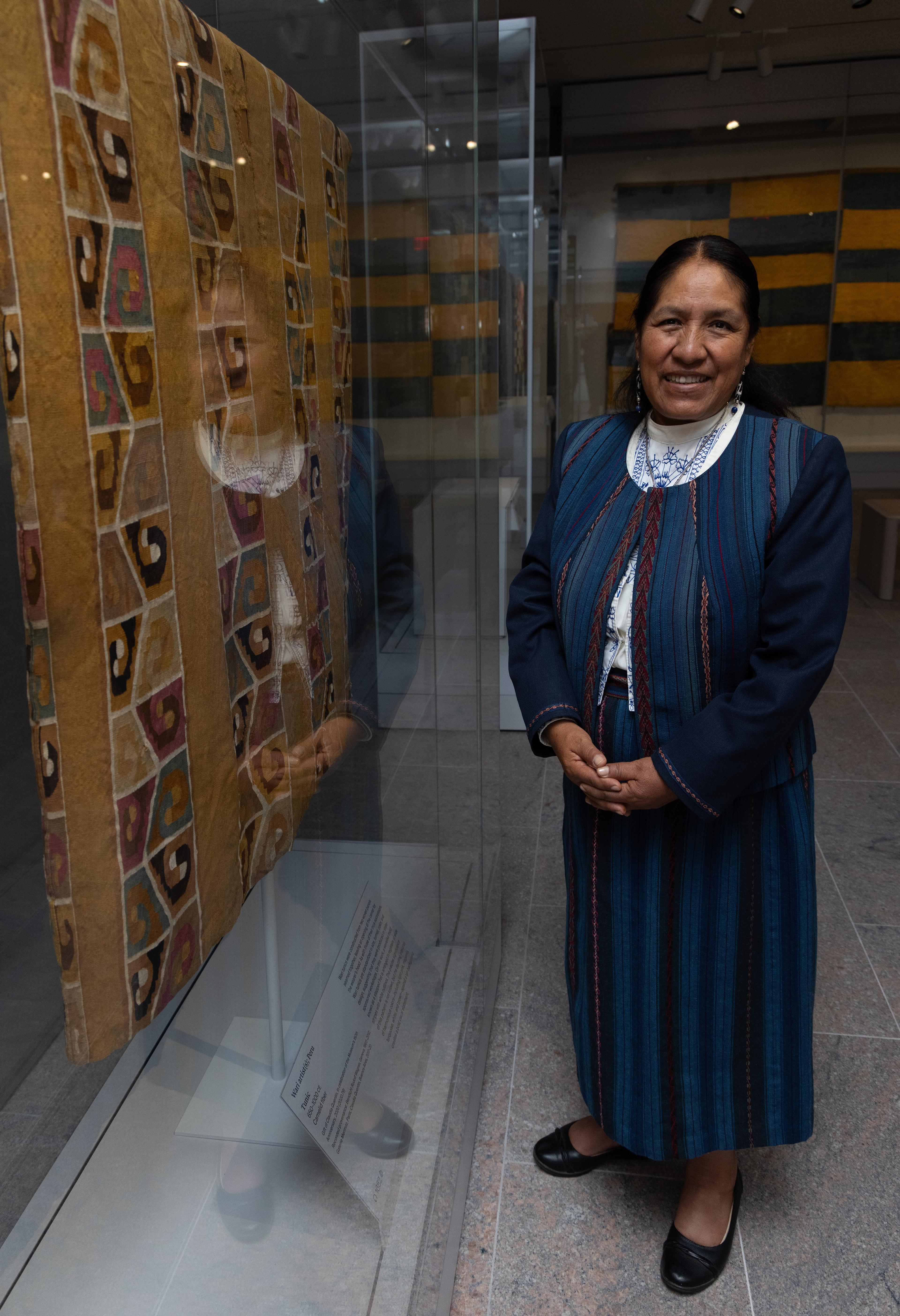
Weavers of different regions and textile traditions have histories and beliefs of how to mark the beginning of the life of the weaver. “In Chinchero, it is believed that the first weaving has to go to the river, so you will never end weaving. Your power will come from that, your fortune will come from that. The hope of the mother is that your daughter will continue producing textiles forever.”
Generations are connected by textiles. “It stays with the family as a living spirit, accompanying the family. A textile from my mother for example it means a lot. It brings me memories, it tells me histories, it's like holding the spirit of my mother through the textiles.”
Hear from Callañaupa Alvarez in the Arts of the Ancient Americas Audio Guide in English and Spanish.
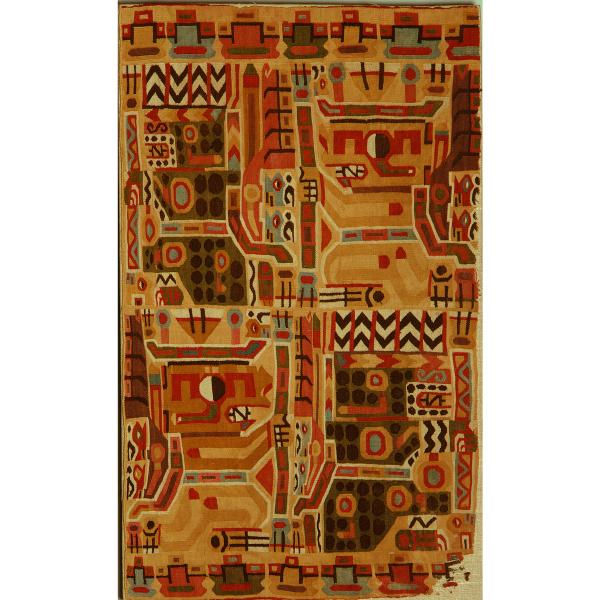
1651. Andean Textiles
Nilda Callañuapa Álvarez and Arabel Fernández López
NILDA CALLAÑAUPA ALVAREZ: For me, living and producing textiles goes along with your life, along with your age, along with your everyday activity, that's why it is living art, it’s not a piece that's from the past.
I am Nilda Callañuapa Álvarez, I am from Chinchero, I am a weaver, spinner, natural dyer, knitter. Today, I am the director and one of the founders of the center for traditional textiles of Cusco.
JOSÉ MARÍA YAZPIK (NARRATOR): Andean textile traditions represent 10,000 years of astounding creation and innovation, evidenced by their rich variety of techniques and forms and their encoded cultural meanings. Weavers and their patrons imbued garments with markers of identity and social meaning.
ARABEL FERNÁNDEZ LÓPEZ: My name is Arabel Fernández López. I am a Peruvian archaeologist, a specialist in Andean textiles.
Textile represent the social scheme of this society when they establish their difference inside and outside their social group. Each textile is a document that not only tell us about the person who made it, but also about the person who wore it.
JOSÉ MARÍA YAZPIK: For Nilda Callañaupa Álvarez, textiles are both part of her heritage and a living art.
NILDA CALLAÑAUPA ALVAREZ: We, the Andean people have inherited from pre-Inca times, the techniques of how to make clothes.
You should be able to be recognized by the type of clothing and textiles you are doing. It’s your cultural identity, where you come from, your origins. If you are single, probably have done different style of textile. When you have children, you might have them with different purpose, different quality. When you get older, then you produce another type of textiles.
JOSÉ MARÍA YAZPIK: Textiles are vibrant, tactile connections to people, communities, and ideas. They are the threads that bind together past and present.
NILDA CALLAÑAUPA ALVAREZ: It stays with the family as a living spirit, accompanying the family. A textile from my mother, for example, it means a lot. It brings me memories, it tells me histories, it's like holding the spirit of my mother through the textiles.

1651. Textiles andinos
Nilda Callañuapa Álvarez y Arabel Fernández López
NILDA CALLAÑAUPA ÁLVAREZ: Las piezas que hacemos para nosotros, pues cada pieza que ejecutamos puedes ser que determina la edad en que estabas, el periodo de tu vida en que has ejecutado. Ese textil se queda en esa parte de mi historia, pero quizás me casé, empecé a tener hijos, empecé a tener una vida mucho más ocupada, familiar…
Soy Nilda Callañaupa Alvarez, soy de Chinchero, soy quechuahablante, soy tejedora, hiladora, tintorera con tintes naturales e historiadora de textiles de la región de Cusco.
JOSÉ MARÍA YAZPIK (NARRADOR): Las tradiciones textiles andinas representan 10,000 años de asombrosa creatividad e innovación, que se manifiestan a través de su gran variedad de técnicas y formas y los significados culturales asignados. Los tejedores y sus mecenas incorporaron en las prendas marcadores de identidad y significado social.
ARABEL FERNÁNDEZ LÓPEZ: Mi nombre es Arabel Fernández López. Soy arqueóloga peruana, especialista en textiles.
Estos textiles representan la memoria, la historia de todas estas sociedades que ya no están con nosotros. Pero sin embargo, ellos han a través de sus hilos, a través de la tecnología, de las técnicas, han capturado todo este conocimiento y han conservado toda esta tecnología, toda esta sabiduría puesta por los antiguos tejedores. Los textiles andinos y amazónicos son importantes también porque representan la identidad de estas comunidades. Ellos necesitan identificarse y lo hacen a través de sus tejidos.
JOSÉ MARÍA YAZPIK: Para Nilda Callañaupa Álvarez, los textiles significan no solo parte de su patrimonio, sino además, un arte vivo.
NILDA CALLAÑAUPA ÁLVAREZ: Los tejedores andinos hemos tenido la suerte de heredar esta herencia patrimonial de nuestros ancestros desde épocas precolombinas, inca, colonial, etc. Nosotros mantenemos parte de estas técnicas ancestrales hoy día, tejiendo.
Los textiles son únicos para cada región, y para cada zona y para cada localidad, entonces es bien notorio los textiles de cada región y se puede observar en cada lugar por tipo de textil, y ropa tradicional de dónde son.
JOSÉ MARÍA YAZPIK: Los textiles son conexiones táctiles y vibrantes con las personas, las comunidades y las ideas. Son, literalmente, los hilos que unen el pasado con el presente.
NILDA CALLAÑAUPA ÁLVAREZ: El textil para mí es parte de la vida, no es un objeto muerto a pesar de que los textiles traen recuerdos de civilizaciones, de generaciones, pero ese textil forma parte de la vida del tejedor, del ser humano y a veces resulta la historia del tejedor conectado con el textil.
